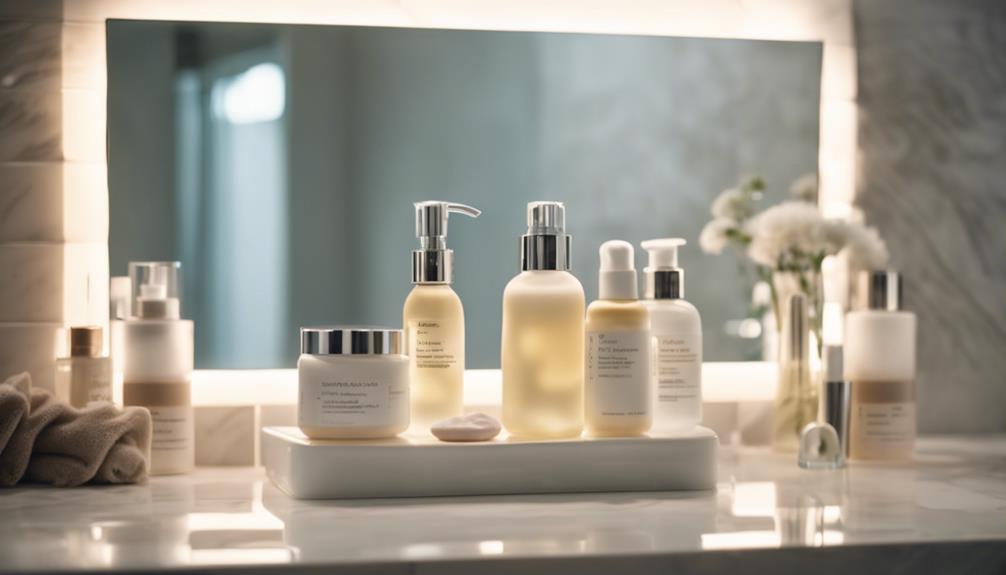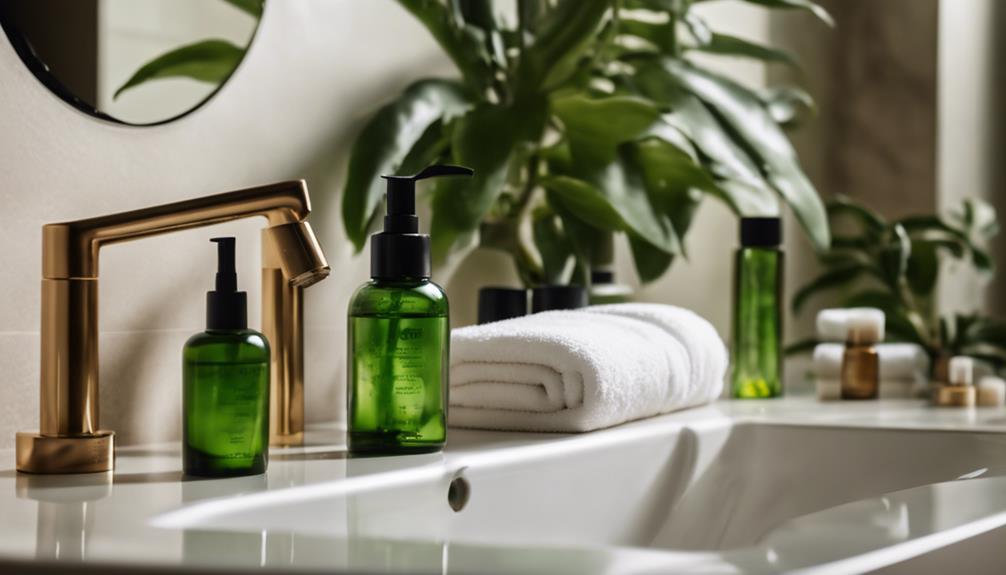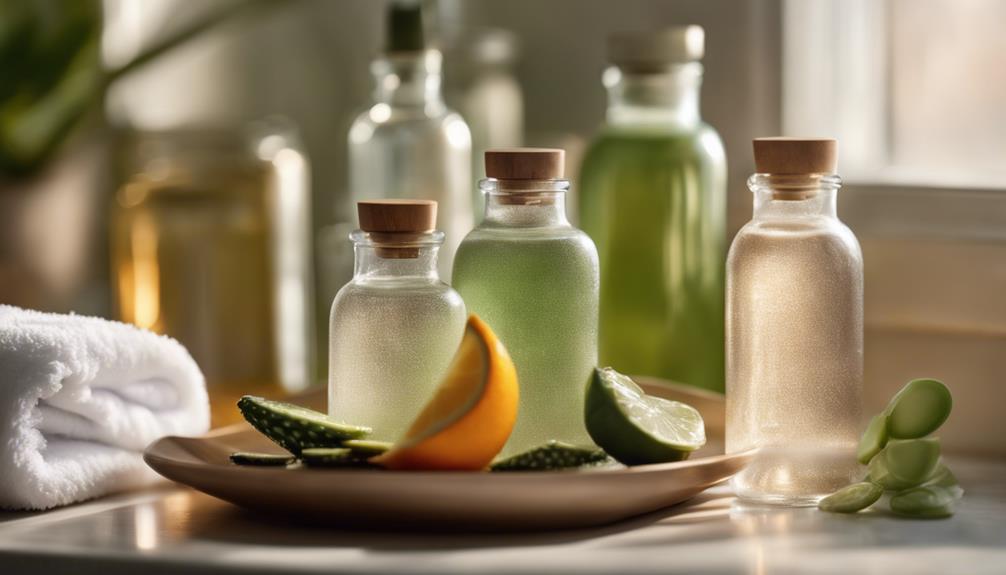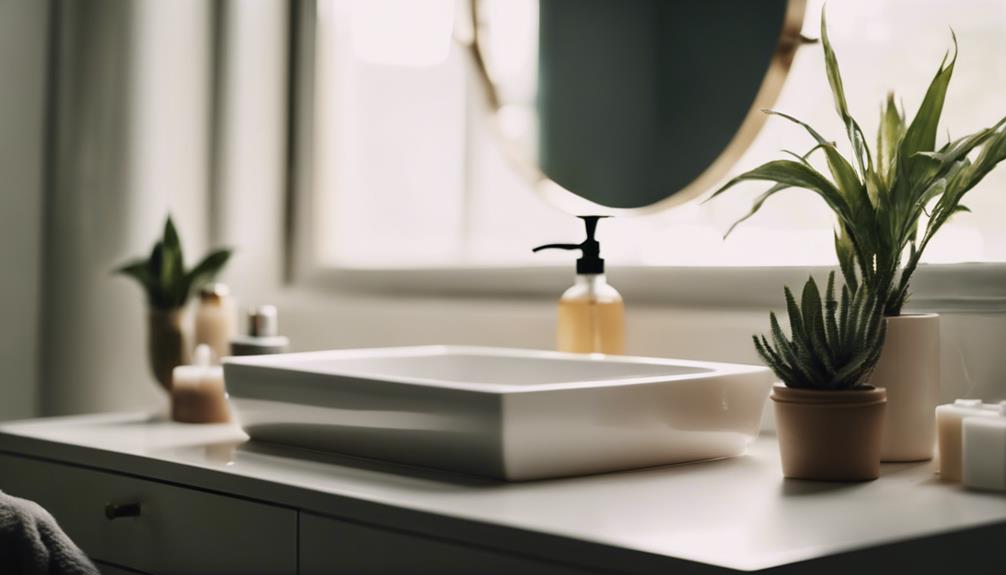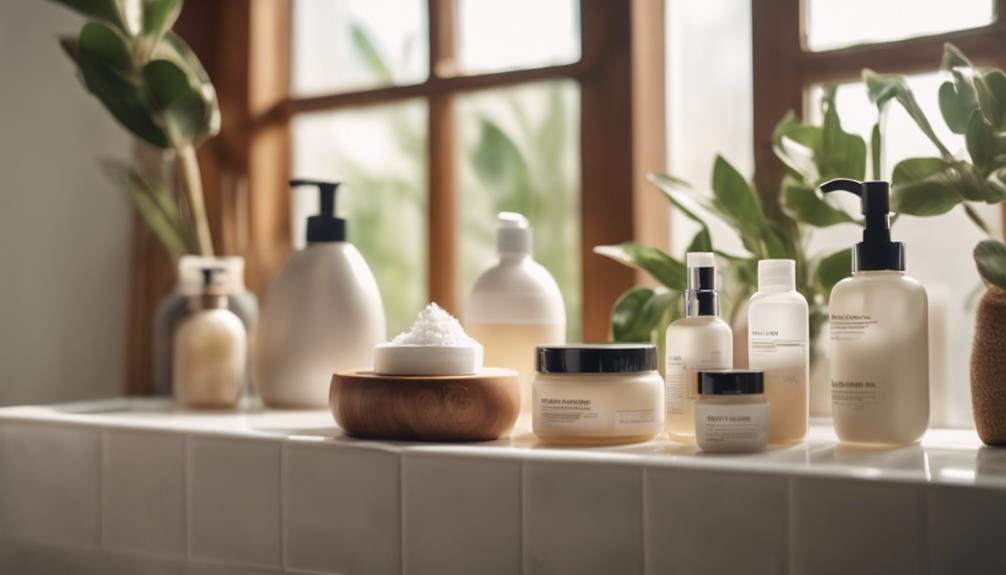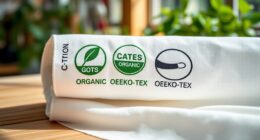In order to effectively layer your skincare products, begin by cleansing to remove dirt and makeup. Next, apply toner to balance your skin’s pH. Following that, use targeted treatments for specific concerns such as acne or fine lines. Then, layer serums from thinnest to thickest, starting with lightweight options like Vitamin C. Once fully absorbed, moisturize to seal in hydration, customized to your skin type. Lastly, complete your routine with broad-spectrum sunscreen to shield against UV rays. This sequence optimizes the efficacy of each product. Stay tuned for more tips on refining your routine!
Key Takeaways
- Start with cleansing to remove dirt and impurities, using an oil-based followed by a water-based cleanser for optimal results.
- Apply toner to restore pH balance, enhance absorption of subsequent products, and improve skin texture.
- Use targeted treatments like serums and spot treatments for specific skin concerns before applying moisturizers.
- Layer serums from thinnest to thickest, starting with lightweight options like Vitamin C for effective penetration.
Start With Cleansing
Starting your skincare routine with cleansing is essential for removing dirt, makeup, and excess oil while keeping your skin's natural pH balance intact. To achieve this, you might consider double cleansing, which involves using an oil-based cleanser first to dissolve makeup and impurities, followed by a water-based cleanser to cleanse deeper. This method effectively prevents clogged pores without compromising your skin barrier.
If you have oily skin, look for cleansers containing active ingredients like salicylic acid to target breakouts, while still being gentle enough to avoid irritation. A gentle, alcohol-free cleanser is ideal for maintaining pH balance and protecting your skin's natural defenses.
Make sure to cleanse for at least 30 seconds, ensuring that you thoroughly remove all impurities. However, be cautious about over-cleansing, as it can lead to stripped skin and discomfort. If you notice tightness after cleansing, it's a sign you might need to adjust your routine.
Apply Toner
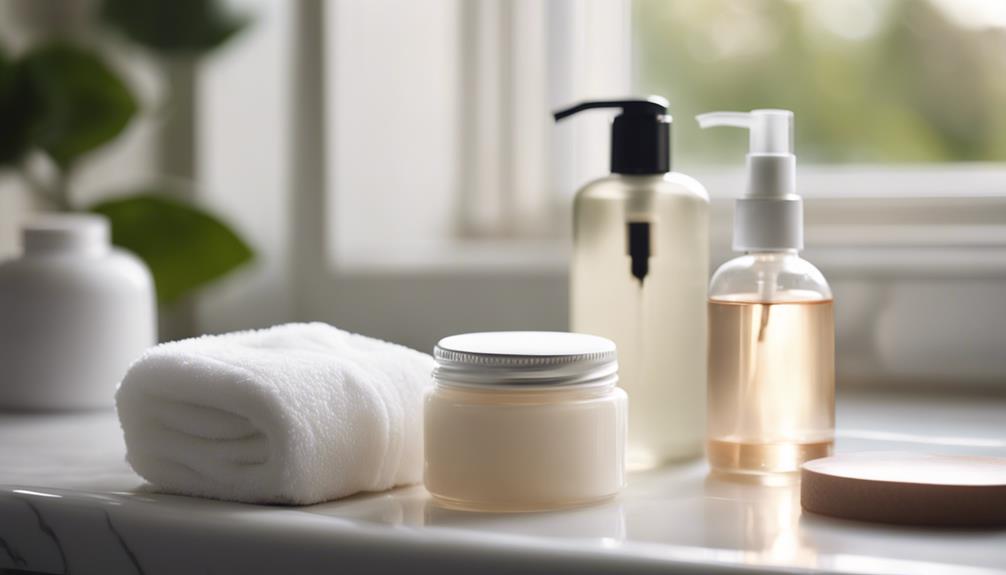
Applying toner right after cleansing helps eliminate any leftover impurities and primes your skin for better absorption of the products that follow. A toner is a key step in your skincare routine, enhancing the effectiveness of serums and moisturizers you'll apply next. By using a toner, you restore your skin's natural pH balance, which is essential for maintaining skin health and preventing breakouts.
To apply toner, soak a cotton pad or ball with the product and gently pat it onto your face. Avoid excessive rubbing to prevent irritation. If you have dry or sensitive skin, opt for a hydrating toner that contains ingredients like hyaluronic acid or rose water. For oily or acne-prone skin, astringent toners with salicylic acid or witch hazel work best.
This simple step can greatly improve your skin's texture and hydration levels. Remember, a well-chosen toner not only cleanses but also prepares your skin to better absorb the active ingredients in your serums and moisturizers, amplifying their benefits.
Use Targeted Treatments
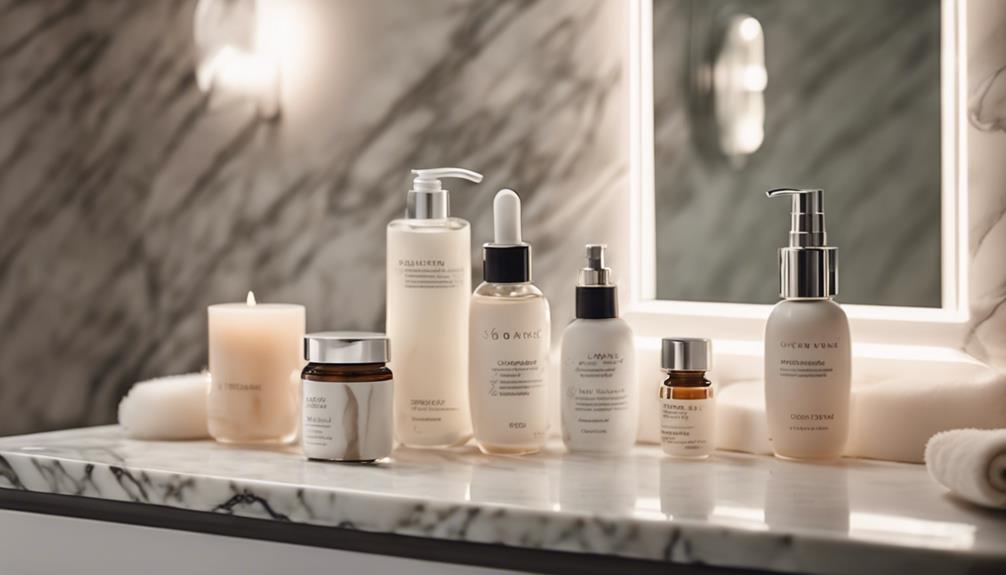
Incorporating targeted treatments into your skincare routine allows you to directly address specific concerns like acne, dark spots, or fine lines for best results.
After cleansing and toning, apply these treatments to guarantee maximum efficacy. Spot treatments, often containing active ingredients like benzoyl peroxide or salicylic acid, are perfect for treating active breakouts. Make sure to apply them directly to the affected areas.
Serums, on the other hand, are highly concentrated formulations that can enhance hydration, brightening, or anti-aging efforts. Apply these serums before your moisturizers to optimize absorption and effectiveness. It's vital to let each targeted treatment absorb fully into your skin before layering on subsequent products. This helps prevent dilution of the active ingredients, making sure you get the most benefits.
If you're looking to improve skin texture and reduce signs of aging, consider incorporating retinol as a targeted treatment. Just remember to introduce it gradually to minimize irritation.
Layer Serums
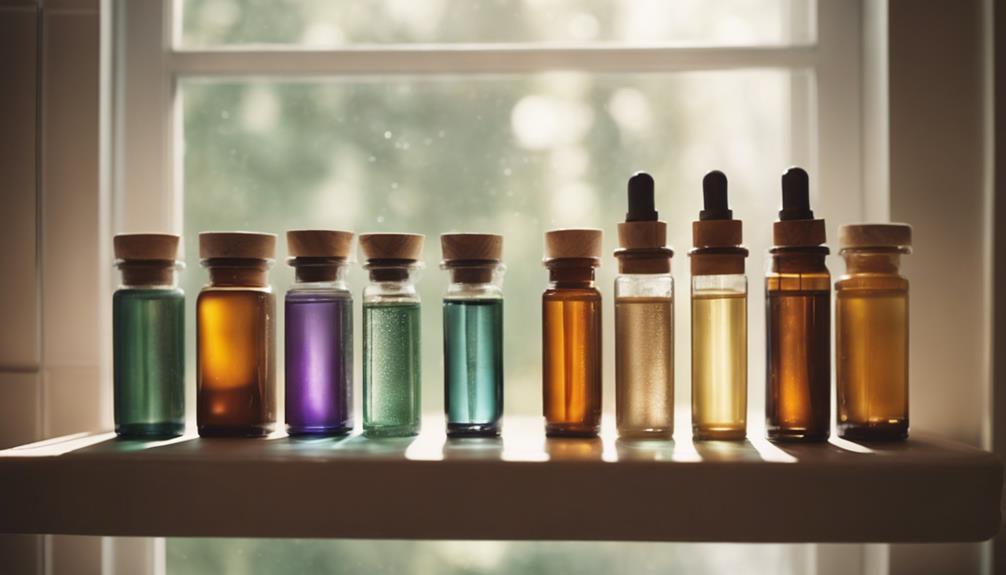
Layering serums correctly enhances their effectiveness and guarantees your skin gets the targeted benefits it needs. After cleansing and toning, it's time to apply your serums. Start with the thinnest consistency first, typically lightweight formulations like Vitamin C. This order guarantees ideal absorption, allowing each product to penetrate effectively and address your specific skin concerns.
Use a pea-sized amount of serum and gently tap it onto your skin using clean fingers. This technique promotes better penetration and enhances hydration. If you have multiple serums, follow the rule of layering from thinnest to thickest. For instance, after your Vitamin C, you might apply a hydrating serum with hyaluronic acid, followed by a thicker formula like niacinamide to minimize pores and fine lines.
Allow each serum layer to absorb fully before applying the next product. This step is essential to prevent pilling and guarantee each serum works effectively.
Moisturize and Seal
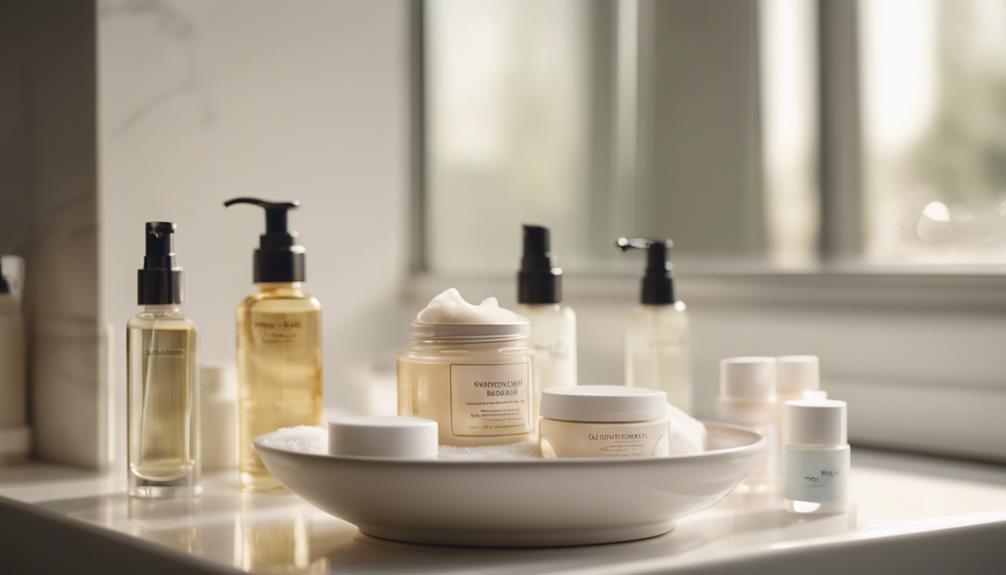
Once you've applied your serums, moisturizing is the next step to lock in hydration and maximize the benefits of your skincare routine. It's crucial to choose the right moisturizer based on your skin type.
For dry skin, look for moisturizers with ceramides, glycerin, or hyaluronic acid. If you have oily or acne-prone skin, opt for lightweight, oil-free formulas.
When it's time to apply, use a pea-sized amount for your face to guarantee adequate coverage. Gently massage the moisturizer into your skin, allowing it to absorb fully. This helps enhance the effectiveness of the active ingredients in your serums while providing vital hydration.
After your moisturizer has absorbed, consider sealing in that moisture with a face oil. This extra layer can help prevent water loss, making certain your skin remains hydrated throughout the day.
Finish With Sunscreen
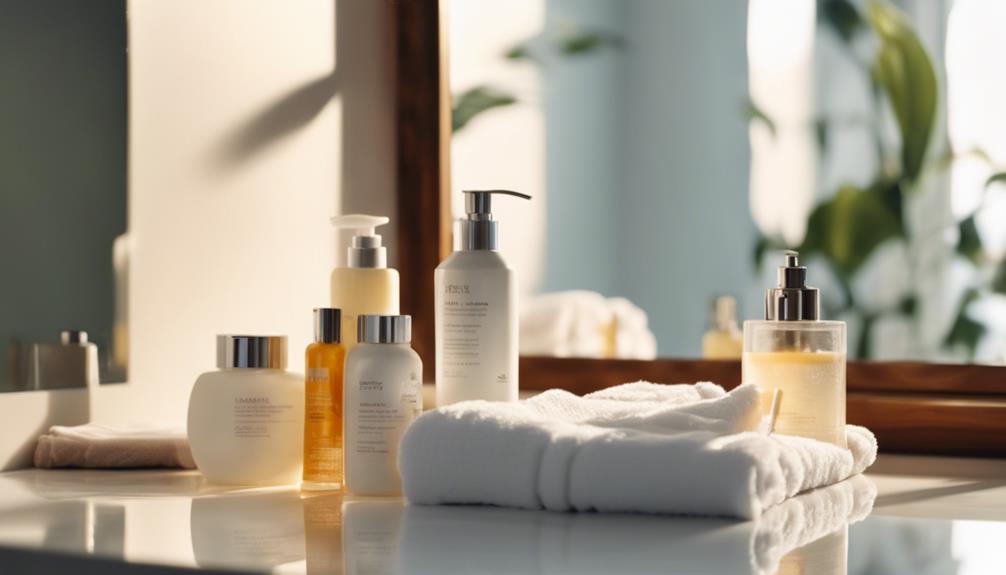
To protect your skin from harmful UV rays, always finish your daytime skincare routine with a broad-spectrum sunscreen. This step is important as it provides a protective barrier against both UVA and UVB rays. Aim for a minimum SPF of 30 to guarantee adequate protection for any skin type. When you apply sunscreen, use about a nickel-sized dollop for your face and neck to achieve the labeled SPF effectiveness.
Don't forget, reapplication is key! You should reapply sunscreen every two hours, especially if you're spending time outdoors or sweating. It's a common misconception that you only need sunscreen on sunny days; even on cloudy days, UV rays can penetrate through the clouds, making daily application crucial.
Incorporating sunscreen into your skincare routine not only protects your skin but also helps prevent premature aging and skin damage. Remember, your skincare routine isn't complete without this essential step. So, make sure to apply sunscreen generously each day to maintain that healthy glow and keep your skin looking its best!
What is the Correct Order for Layering Skincare Products for Maximum Effectiveness?
To achieve optimal results, it’s essential to follow the correct skincare routine order. Start with cleansing, followed by toning, applying treatment products, and finishing with moisturizer and sunscreen during the day. This sequence ensures that each product can effectively penetrate the skin and deliver its benefits.
Conclusion
Now that you know the ideal order for your skincare routine, imagine the fresh, radiant glow you'll have as you step out each day.
By cleansing, toning, treating, layering serums, moisturizing, and finishing with sunscreen, you're giving your skin the love it deserves.
Isn't it time you embraced this simple yet effective ritual?
With consistent care, you'll not only look great but feel confident in your skin, ready to take on the world.
